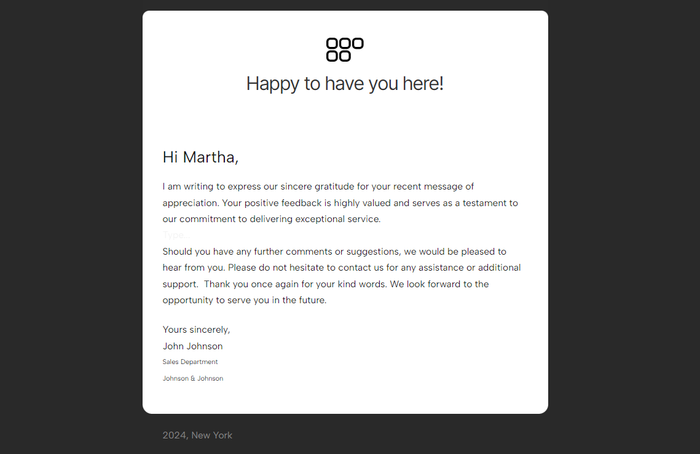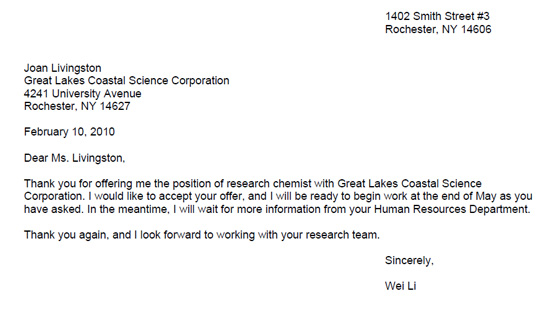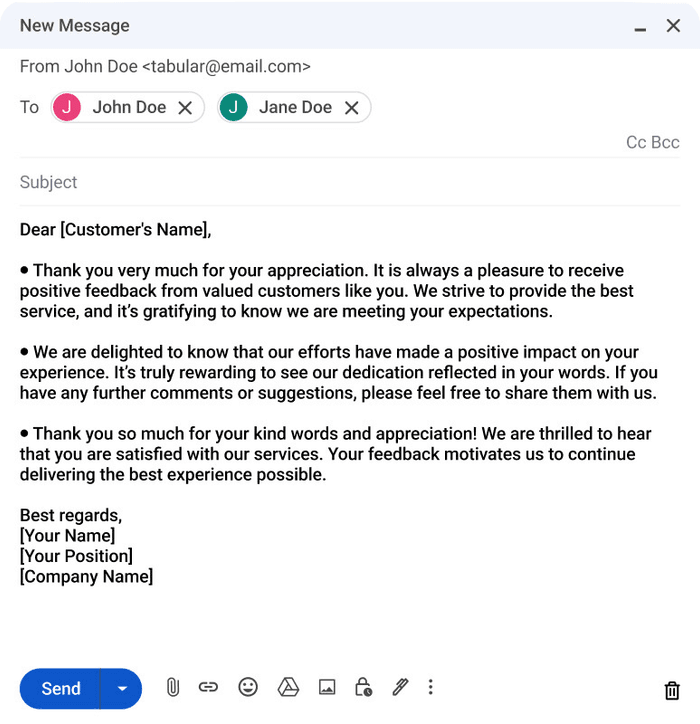Replying to a thank you email professionally is simple. It shows respect and builds good relationships.
Crafting the right response can leave a lasting impression. In a world where emails are a primary mode of communication, responding to a thank you email with professionalism is essential. It not only reflects your courtesy but also reinforces positive connections with colleagues, clients, or business partners.
A well-crafted reply can enhance your professional image and contribute to stronger relationships. This guide will help you understand the key elements of a professional thank you email response, ensuring that you communicate effectively and graciously. Whether you’re new to professional emails or looking to refine your skills, this article provides valuable insights to help you respond with confidence and poise. In addition to crafting thoughtful responses, it’s also important to learn how to decline requests politely when necessary. This skill can prevent misunderstandings and maintain goodwill in professional interactions. By mastering both gratitude and gracious refusal, you will enhance your overall communication effectiveness.

Credit: tabular.email
Crafting A Professional Response
Crafting a professional response to a thank you email is essential. Start by expressing genuine gratitude. Keep your reply concise and maintain a respectful tone.
Crafting a professional response to a thank you email might seem straightforward, but it is an opportunity to reinforce your professionalism and maintain positive relationships. A well-crafted reply can leave a lasting impression and show your appreciation for the acknowledgment. Here’s how to do it effectively:
Acknowledging The Thank You
Start by acknowledging the thank you email. This shows that you appreciate their gratitude and are attentive to their messages.
For instance, you can say:
“I appreciate your kind words.”
Or simply:
“Thank you for your email.”
By doing so, you affirm the positive interaction and show that their thank you has been well-received.
Maintaining A Polite Tone
Keep your tone polite and professional throughout your response. This sets the right mood and shows respect for the person who sent the email.
You can add a personal touch to your reply by referring to specific details of their email. For example:
“It was a pleasure working with you on the project, and I’m glad to hear that you found the results satisfactory.”
Always close with a polite and forward-looking statement:
“I look forward to future opportunities to collaborate.”
This reinforces a positive outlook and leaves the door open for future interactions.
Remember, your response doesn’t need to be long. A brief, polite, and professional reply can be just as effective. How do you ensure your thank you email replies are professional?
Personalizing Your Reply
Personalizing your reply to a thank you email can make a significant impact. It shows appreciation and builds a stronger connection with the recipient. Personalizing your message demonstrates that you value the relationship and recognize the individual’s unique contributions.
Using The Recipient’s Name
Always use the recipient’s name in your reply. This small gesture can make your message feel more personal. Instead of starting with a generic greeting, address them by their name. For example, “Dear John” or “Hello Maria” instead of just “Hi”. This simple change can make your email feel more engaging and thoughtful.
Adding Specific Details
Include specific details in your reply. Mention something relevant to the email they sent. For instance, if they thanked you for your help on a project, acknowledge their project specifically. You can say, “I am glad I could assist with the marketing strategy.” This makes your reply more meaningful and shows that you paid attention to their words.
Another way to personalize your reply is to reference shared experiences or interests. If you know the recipient is passionate about a particular topic, mention it briefly. For example, “I hope your recent trip was enjoyable!” This adds a personal touch and strengthens your connection.
Expressing Genuine Gratitude
Express genuine gratitude by replying promptly and personally. Address the sender by name, acknowledge their message, and express thanks sincerely. Keep the tone professional and positive, ensuring your appreciation is clear.
Expressing genuine gratitude in a thank you email can make a lasting impression. It’s more than just saying “thank you”; it’s about showing that you truly appreciate the gesture. Whether you’re thanking a colleague for their help or a client for their business, expressing genuine gratitude can strengthen relationships and build trust.
Showing Appreciation
Express your appreciation sincerely. Use specific examples to show why their actions meant a lot to you. For instance, if a colleague helped you complete a project, mention how their support made a difference in your work.
Reflect on moments when someone’s help changed the course of your day. Share that impact in your email. It makes your gratitude feel real and heartfelt.
Ask yourself: How did their action affect you? Did it save you time, ease your stress, or help you learn something new? Let them know.
Avoiding Generic Responses
A generic “thank you” can feel impersonal. Tailor your response to the situation. Instead of “Thank you for your help,” say “Thank you for your insightful feedback on the project.”
Think about how your response can stand out. Personalize it by mentioning specific details. This shows you put thought into your reply.
Consider how you feel when you receive generic replies. They often lack warmth and connection. Aim to make your email memorable and engaging.
In your thank you email, make it clear why you’re grateful. Avoid clichés and focus on genuine expressions. This can make your gratitude more impactful and appreciated.
Engage with your reader by asking questions or sharing brief stories. This can make your email more interactive and personal.
Reinforcing Key Points
Reinforcing key points in a thank you email is crucial. It shows you paid attention and value the conversation. This helps in keeping the communication clear and professional. Here’s how to do it effectively.
Recapping Important Information
Summarize the main points discussed. Highlight the key information in a concise manner. This ensures both parties are on the same page. It also helps in keeping the records straight. For example, you could say, “Thank you for your insights on the project timeline and budget.” This reinforces what was discussed and acknowledged.
Confirming Next Steps
Outline what comes next. Clarify any actions or deadlines that were mentioned. This ensures there is no confusion about future tasks. For instance, “I will send the draft by Friday as discussed.” This confirms your commitment and timeline. It helps in maintaining a smooth workflow and avoids misunderstandings.
Maintaining Professionalism
Replying to a thank you email professionally involves acknowledging the gratitude, expressing appreciation, and maintaining a polite tone. Craft your response clearly and concisely to show respect and professionalism.
Maintaining professionalism in your thank you email replies is crucial. It leaves a positive impression and reflects your respect for the recipient. A professional reply can foster stronger business relationships and ensure effective communication.
Using Proper Language
Choose words carefully. Use formal language to maintain a professional tone. Avoid slang or informal expressions. Address the recipient with their appropriate title. For example, use “Mr.”, “Ms.”, or “Dr.” followed by their last name.
Avoiding Casual Phrases
Stay away from phrases that are too casual. Phrases like “Hey” or “Thanks a bunch” are inappropriate in professional settings. Instead, opt for “Thank you for your assistance” or “I appreciate your help.” These phrases convey gratitude without sounding too casual.

Credit: www.nature.com
Closing The Email
Responding to a thank you email professionally involves expressing genuine appreciation. Acknowledge their message and briefly mention your gratitude. Close with a polite and friendly remark.
Closing your email is just as important as the content you include in the body. A professional and thoughtful closing can leave a lasting impression. It’s your final opportunity to reinforce your appreciation and keep the door open for future communication. So, how do you close a thank you email in a way that conveys professionalism and gratitude?
Using An Appropriate Sign-off
Choosing the right sign-off is crucial. It sets the tone for your email and leaves the recipient with a positive feeling.
Consider using “Best regards” or “Sincerely” for a formal touch. These are tried-and-true options that are always safe.
If you have a more relaxed relationship with the recipient, “Best” or “Thank you again” could work well. Personalize your sign-off to match the relationship you have with the recipient.
Including Contact Information
Don’t forget to include your contact information. This makes it easy for the recipient to reach out to you if they need to follow up or have further questions.
Add your phone number, email address, and LinkedIn profile. This can be particularly useful in professional settings.
Including your contact details in your email signature ensures that the recipient has all the information they need to get in touch with you again. It demonstrates professionalism and preparedness.
Closing your thank you email professionally can set the stage for future interactions. Remember, how you finish your email can be just as impactful as how you start it. So, take a moment to craft a thoughtful and professional closing.
Proofreading Your Response
Responding to a “Thank You” email might seem straightforward. Yet, a professional response requires careful proofreading. Ensuring your reply is error-free and clear is vital. This shows respect and attention to detail.
Checking For Errors
Before sending your email, check for spelling and grammar mistakes. Use tools like spell check. They can catch common errors. Read your email out loud. This helps identify awkward sentences and typos. Verify names and titles. Ensure you spell them correctly. An error-free response shows professionalism and care.
Ensuring Clarity
Make sure your message is clear. Avoid jargon or complex terms. Use short and simple sentences. This makes your email easy to understand. Break long paragraphs into shorter ones. This improves readability. Ensure your main points stand out. Clear communication builds trust and prevents misunderstandings.
Utilizing Templates
Utilizing templates can save you time and ensure consistency. Templates help maintain a professional tone in your thank you emails. They offer a foundation that you can personalize to fit each situation. Let’s explore the benefits and how to customize templates effectively.
Benefits Of Templates
Templates save time. You don’t need to start from scratch each time.
They ensure a consistent tone. This reflects well on your professionalism.
Templates reduce errors. Standardizing content helps avoid mistakes.
They help you stay organized. Managing multiple replies becomes easier.
Customizing Templates
Personalize the greeting. Use the recipient’s name.
Refer to specific details. Mention something unique from their email.
Add a personal touch. Share a relevant anecdote or thought.
Check for relevance. Ensure the template matches the context of the reply.
Revise and proofread. Make sure the final email is error-free.
Credit: blog.beehiiv.com
Frequently Asked Questions
How Do You Respond To Thank You Email Professionally?
Reply with a polite and concise message. Express gratitude and acknowledge their appreciation. Example: “Thank you for your kind words. I appreciate it!”
How Do You Say Thank You Professionally?
Say thank you professionally by stating, “I appreciate your assistance. ” Alternatively, use “Thank you for your support” or “I am grateful for your help. “
How To Politely Respond To “thank You”?
You’re welcome! No problem at all! My pleasure! Glad I could help! Anytime!
How Do You Respond To A Professional Politely Email?
Respond promptly. Address the sender by name. Thank them for their email. Answer their questions clearly. End with a polite closing.
Conclusion
Responding to a thank you email professionally is crucial. It shows respect and appreciation. Use polite language and keep your message brief. Acknowledge the sender’s gratitude and express your thanks. Personalize your response to make it genuine. Remember, a professional reply strengthens relationships.
Practice these tips to enhance your email communication. It will help you leave a positive impression. Your thoughtful response can make a difference. Keep these strategies in mind for future emails.
